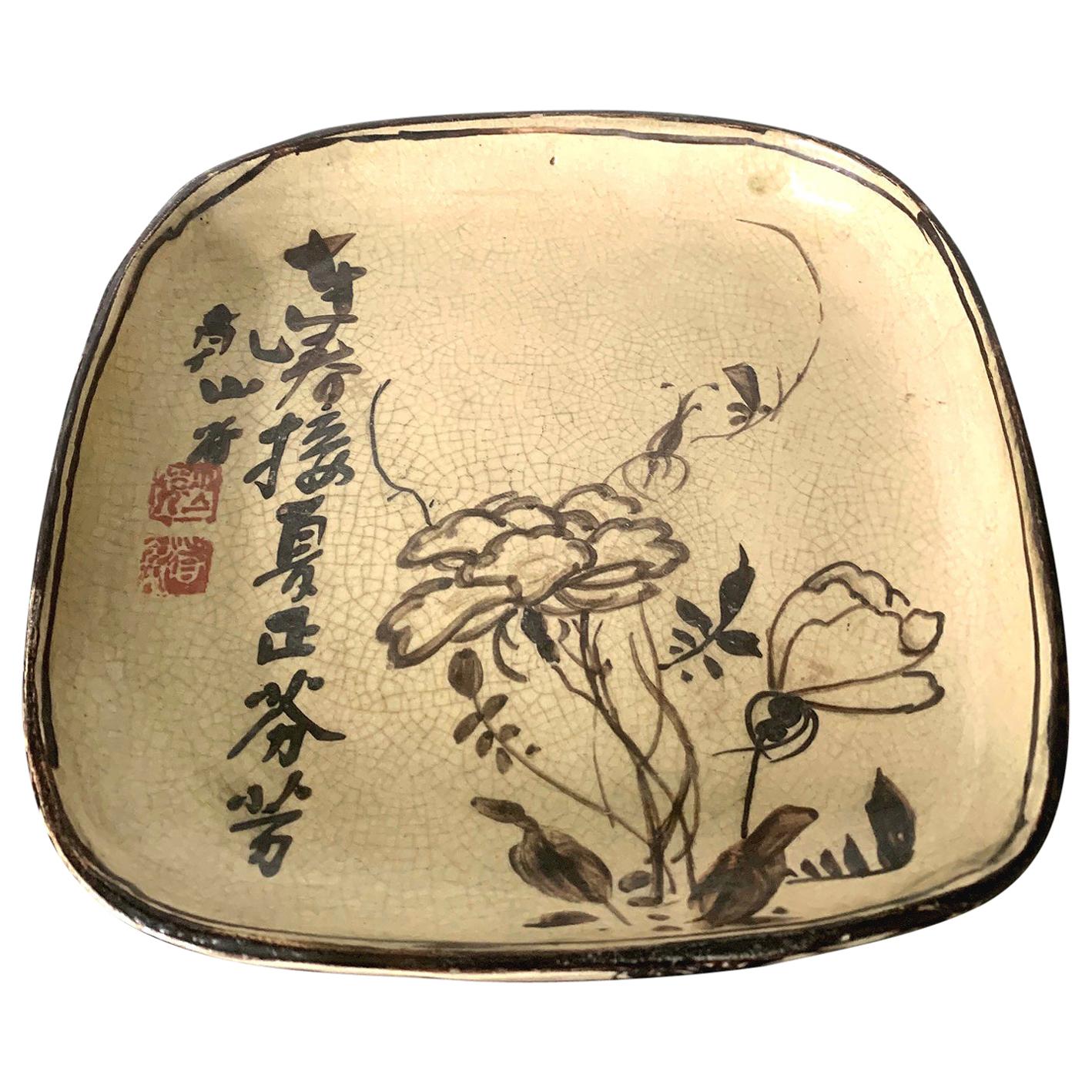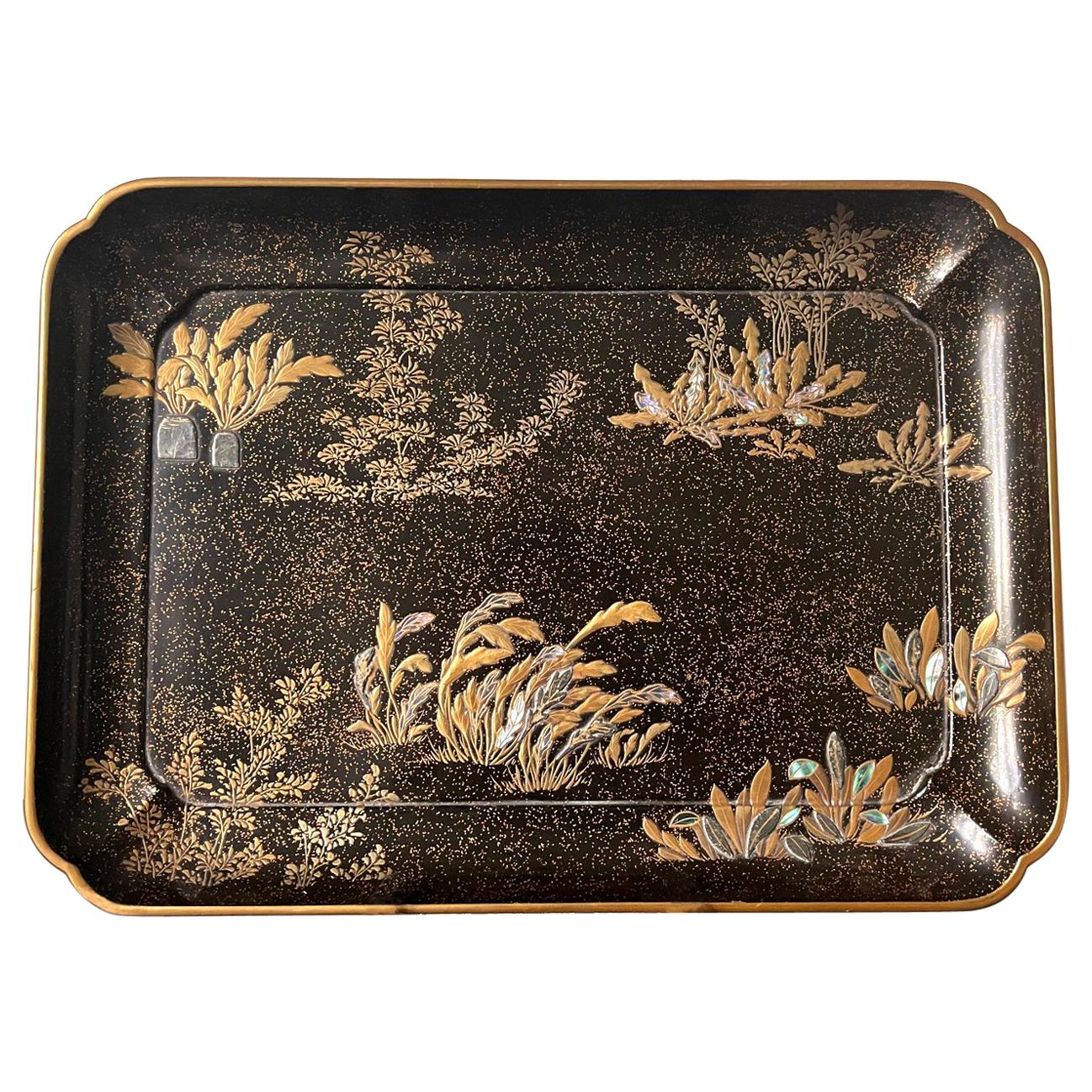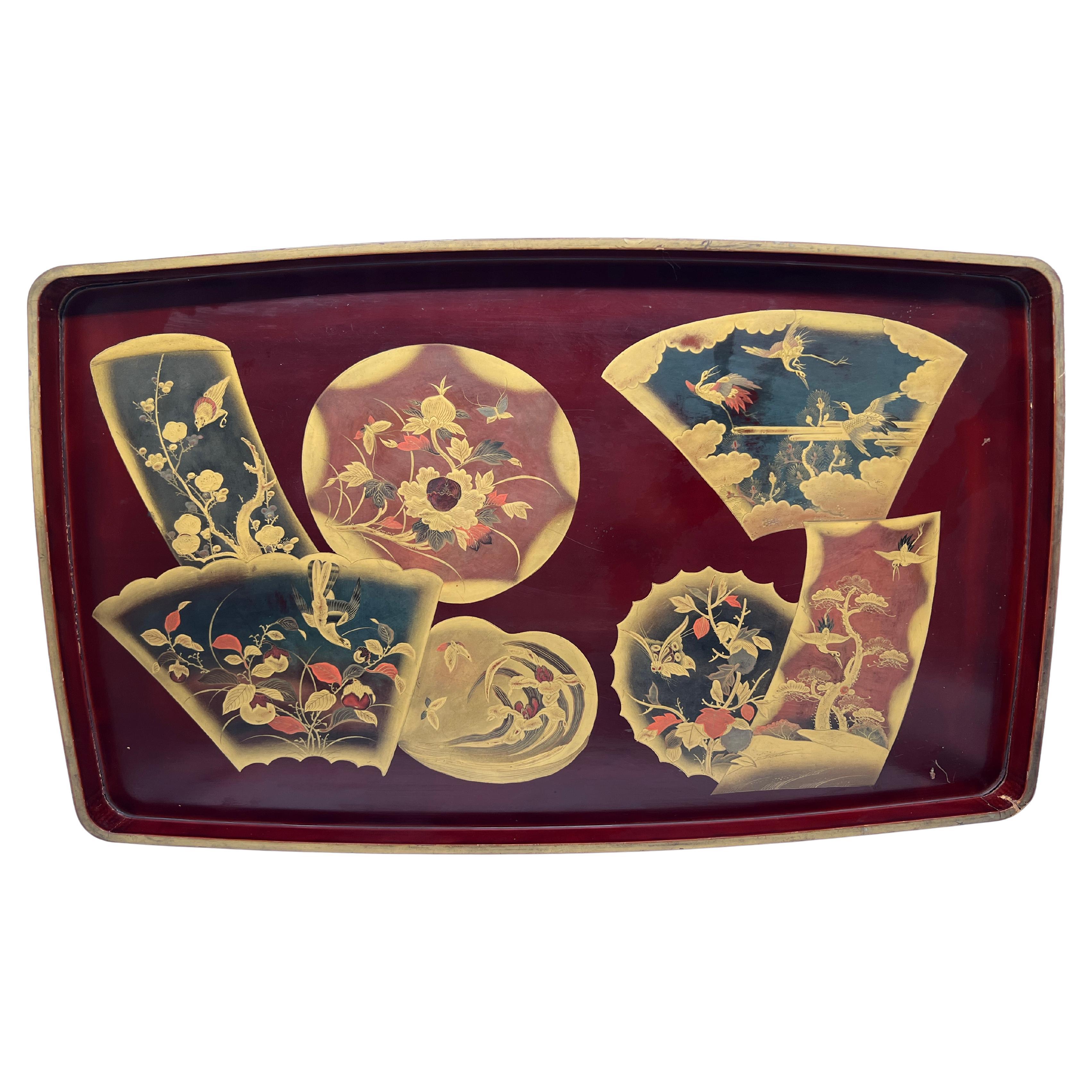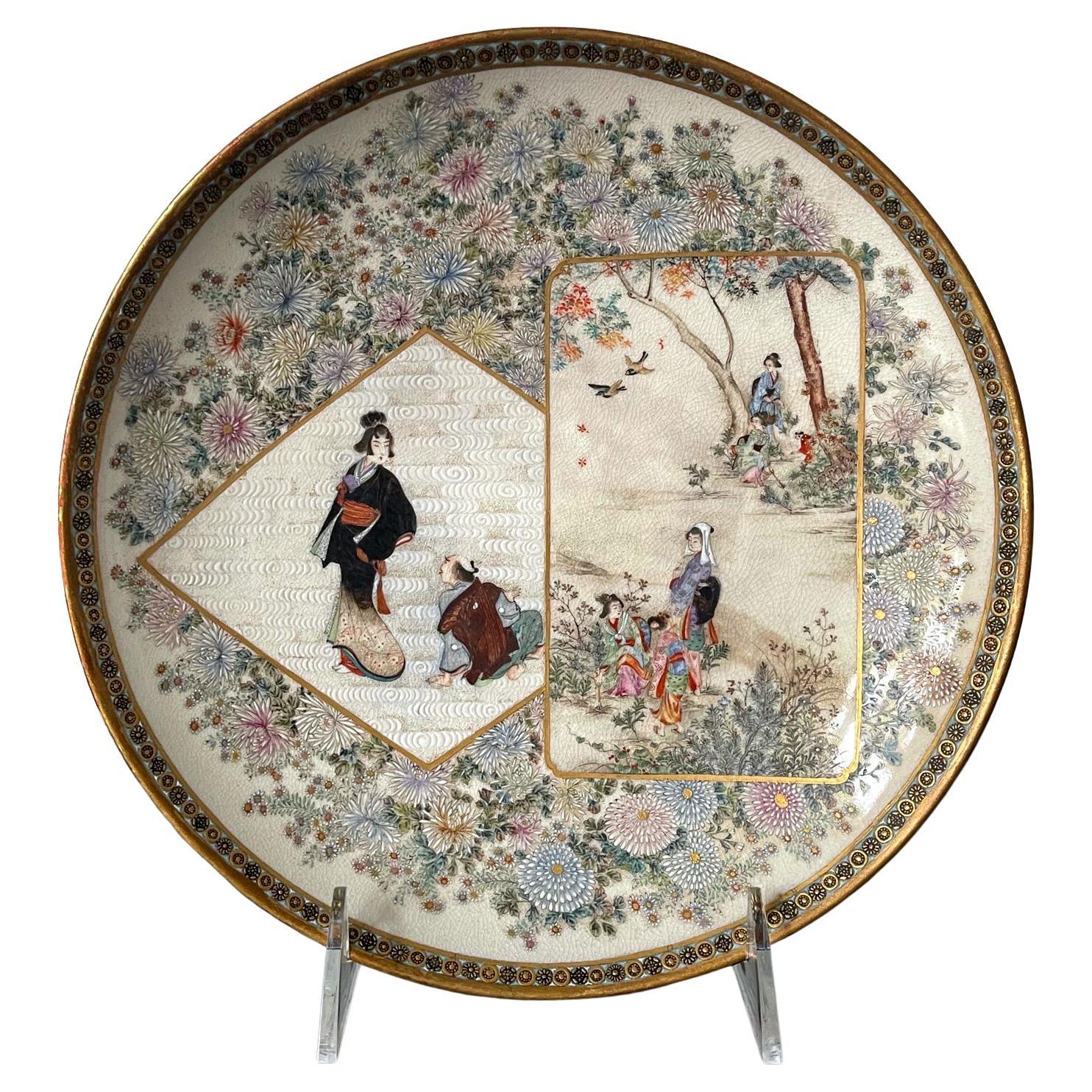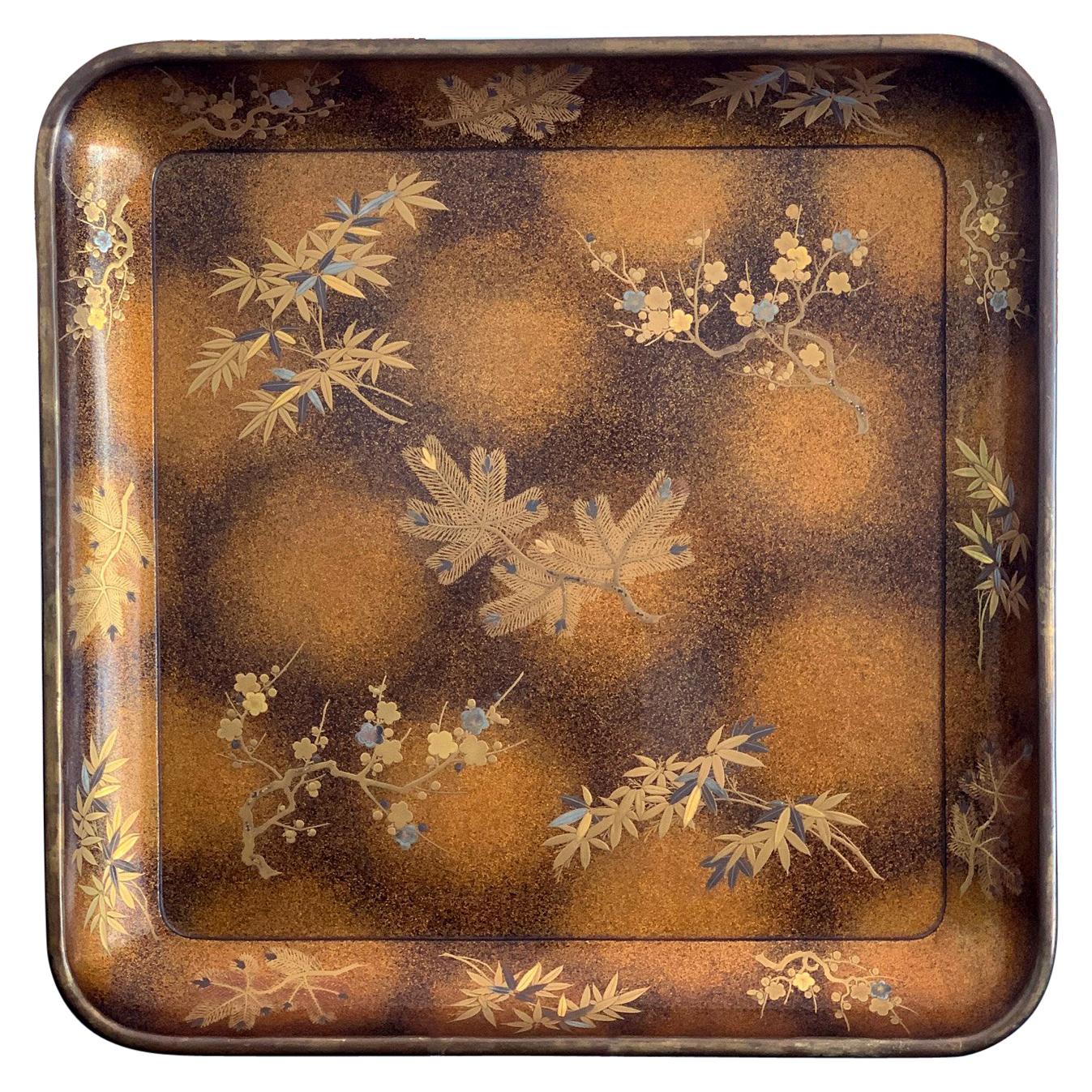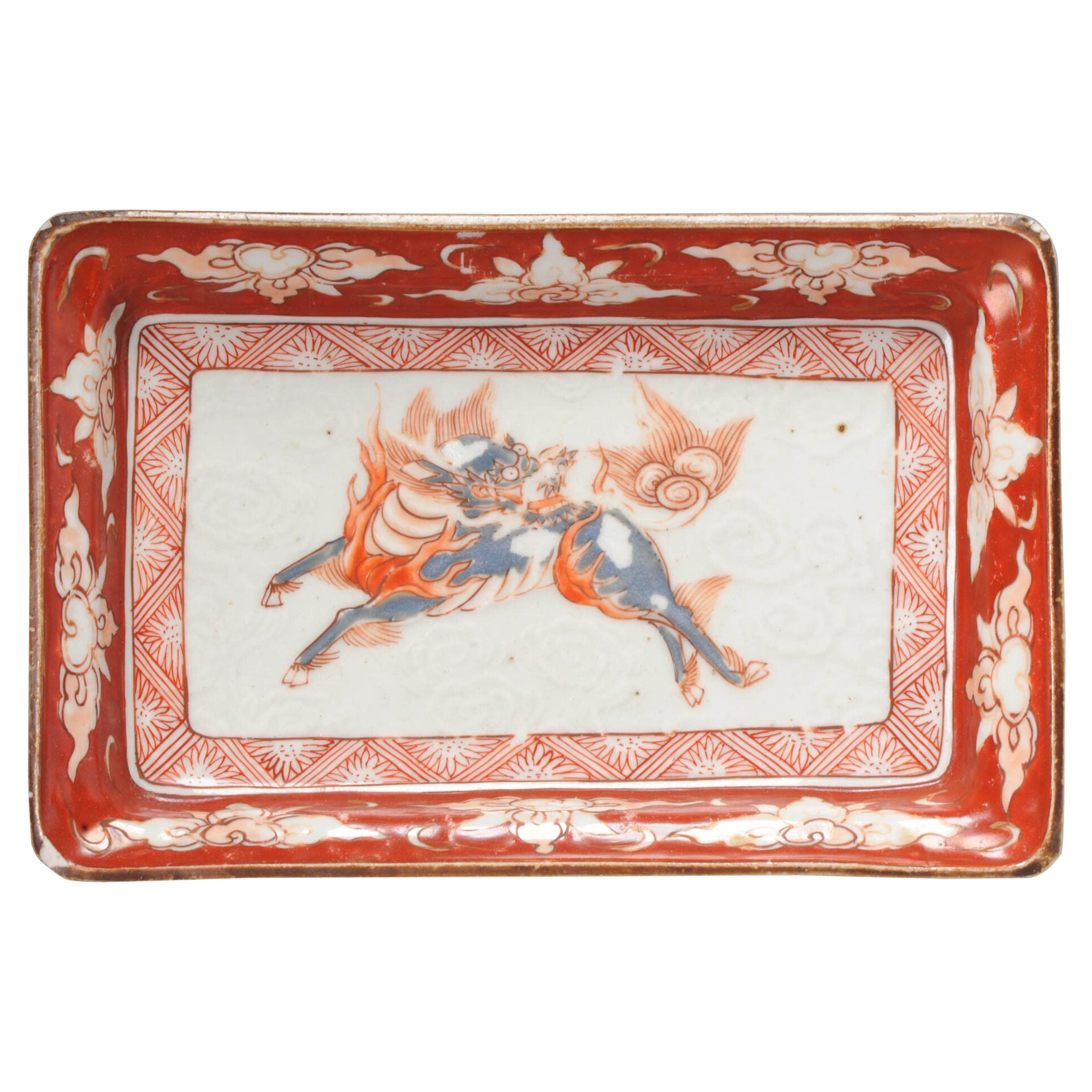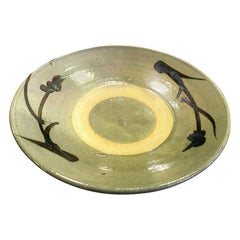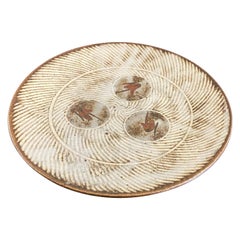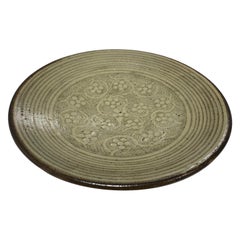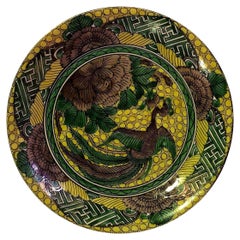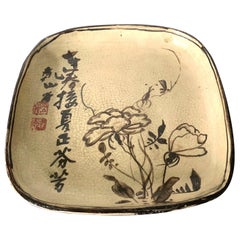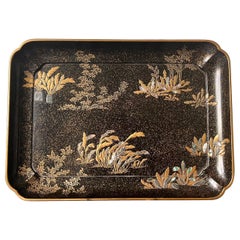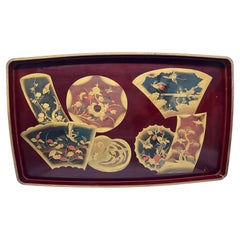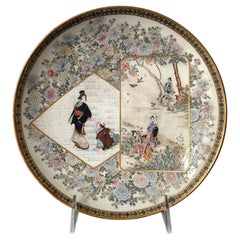Items Similar to Ogata Kenzan Signed Japanese Edo Pottery Hand Painted Tea Plate Tray With Box
Want more images or videos?
Request additional images or videos from the seller
1 of 21
Ogata Kenzan Signed Japanese Edo Pottery Hand Painted Tea Plate Tray With Box
$6,500
£4,932.05
€5,639.36
CA$9,078.74
A$10,094.32
CHF 5,270.70
MX$122,872.46
NOK 67,251.80
SEK 63,011.73
DKK 42,087.57
Shipping
Retrieving quote...The 1stDibs Promise:
Authenticity Guarantee,
Money-Back Guarantee,
24-Hour Cancellation
About the Item
A wonderfully designed and beautifully hand painted tea ceremony tray/plate by esteemed Japanese artist and master potter Ogata Kenzan (1663-1743). Kenzan is widely considered to be Japan's most famous ceramic artist. This piece dates back to the Edo Period (1603-1868)
Ogata Kenzan (尾形 乾山), whose original name was Ogata Shinsei, was born in 1663 in Kyoto, Japan. Kenzan studied with the potter Nonomura Ninsei and eventually established his own kiln. Kenzan is known for his distinctive style and motifs which often featured freely brushed grasses, blossoms, flowers, and birds. His works were famed for their perfect relation between design and shape. He often collaborated on the decoration of pottery with his older brother, the Japanese artist Ogata Korin, after whom the style known as Rinpa (Rimpa) was named.
After his passing in 1743, subsequent Japanese potters inherited the name Ogata Kenzan (none were blood-related) as an homage to the original pottery master.
The tray/plate features a rectangular shape that only the original Kenzan produced and hand painted pair of eggplant decoration modeled from his Eggplant painting with written poem (”Ripen! Eggplants, Grow and grow, eggplants, Ripen! Eggplants, Should you not ripen, become a pasted fabric picture on the shelf”) which can be found on display at the Fukuoka Art Museum in Japan.
The piece is signed on the base and sealed in red in the front corner. It comes with a wooden tomobako storage box with written notation that translates as "Kenzan Eggplant Rectangular plate".
A rare, quite scarce, and special work that would clearly stand out and be a great addition to any Japanese or Asian pottery/ ceramic collection.
Bowl dimensions: 1,4" high, 9.85" wide, 7.75" deep
Box: 3.15" high, 11" wide, 9" deep.
- Dimensions:Height: 1.4 in (3.56 cm)Width: 9.85 in (25.02 cm)Depth: 7.75 in (19.69 cm)
- Style:Edo (Of the Period)
- Materials and Techniques:
- Place of Origin:
- Period:
- Date of Manufacture:18th Century
- Condition:The plate is in very good vintage condition with no discernable flaws, cracks, chips, etc... and light if any natural organic wear consistent with age and use as does the wood storage box (please see photos). Beautiful and quite special overall.
- Seller Location:Studio City, CA
- Reference Number:1stDibs: LU2254343677752
About the Seller
5.0
Platinum Seller
Premium sellers with a 4.7+ rating and 24-hour response times
1stDibs seller since 2016
908 sales on 1stDibs
Typical response time: <1 hour
- ShippingRetrieving quote...Shipping from: Van Nuys, CA
- Return Policy
Authenticity Guarantee
In the unlikely event there’s an issue with an item’s authenticity, contact us within 1 year for a full refund. DetailsMoney-Back Guarantee
If your item is not as described, is damaged in transit, or does not arrive, contact us within 7 days for a full refund. Details24-Hour Cancellation
You have a 24-hour grace period in which to reconsider your purchase, with no questions asked.Vetted Professional Sellers
Our world-class sellers must adhere to strict standards for service and quality, maintaining the integrity of our listings.Price-Match Guarantee
If you find that a seller listed the same item for a lower price elsewhere, we’ll match it.Trusted Global Delivery
Our best-in-class carrier network provides specialized shipping options worldwide, including custom delivery.More From This Seller
View AllShoji Hamada Japanese Mingei Pottery Plate with Original Signed Sealed Box
By Shoji Hamada
Located in Studio City, CA
An exquisite, unique plate by master Japanese potter Shoji Hamada, a fine early example of his iron pigment brushed and glazed bamboo hakeme motif. The original Hamada stamped or sealed and signed box is included. Rare to find such a beautiful piece in such impeccable condition with its original signed box.
This work is sure to shine in any collection or setting.
Shoji Hamada was designated a Living National Treasure in Japan in 1955. In 1968 he received Japan's highest artistic award the Order of Culture. His work can be found in collections and museums worldwide including Tokyo’s Japan Folk Art Museum and The Tate Museum...
Category
Early 20th Century Japanese Showa Ceramics
Materials
Stoneware
Tatsuzo Shimaoka Signed Japanese Mingei Rope Inlay Ceramic Pottery Bowl Plate
By Tatsuzo Shimaoka 2
Located in Studio City, CA
An exquisitely decorated and wonderfully executed ceramic Mingei glazed plate/ low bowl by Japanese National Treasure and Mashiko pottery master Tatsuzo Shimaoka. This work displays his famous Jomon Zogan rope inlay design, hand-painted decoration, and has his impressed "Ta" signature on the base.
Shimaoka, who started as an apprentice to famed Japanese potter Shoji Hamada in 1946 before opening his pottery studio, has exhibited worldwide including in North America, Asia, and Europe. In 1996 he was bestowed the title of Japanese Living Treasure...
Category
Mid-20th Century Japanese Showa Ceramics
Materials
Earthenware
Tatsuzo Shimaoka Signed Japanese Mingei Rope Inlay Mashiko Pottery Plate Charger
By Tatsuzo Shimaoka 2
Located in Studio City, CA
A wonderfully decorated and executed large Mingei pottery plate/charger by Japanese National Treasure Mashiko-yaki ceramic master Tatsuzo Shimaoka. This work exhibits his signature r...
Category
Mid-20th Century Japanese Showa Ceramics
Materials
Earthenware, Pottery
Japanese Signed Polychrome Ceramic Pottery Plate, Showa Period
Located in Studio City, CA
A wonderfully decorated, hand painted Japanese plate.
From a collection of Japanese art, pottery, and artifacts.
Signed or stamped o...
Category
Mid-20th Century Japanese Showa Ceramics
Materials
Ceramic
Tatsuzo Shimaoka Signed Japanese Mingei Banana Leaf Mashiko Pottery Plate Bowl
By Tatsuzo Shimaoka 2
Located in Studio City, CA
A wonderfully hand-decorated and executed large Mingei pottery plate/charger/low bowl by Japanese National Treasure Mashiko-yaki ceramic master Tatsuzo Shimaoka. This work features a...
Category
Mid-20th Century Japanese Showa Ceramics
Materials
Earthenware, Pottery
Shinbei Sakakura X (10th) Japanese Hagi Yaki Ware Pottery Chawan Tea Bowl & Box
Located in Studio City, CA
A wonderfully hand crafted and beautifully glazed Hagi Yaki Ware Chawan tea bowl by the 10th Shinbei Sakakura (X). This piece has quite a special feel to it. The Chawan radiates i...
Category
Antique Mid-19th Century Japanese Edo Ceramics
Materials
Pottery, Stoneware
You May Also Like
Japanese Ceramic Dish Meiji Ogata Kenzan
Located in Atlanta, GA
A Japanese ceramic shallow dish in square form with rounded corners from Meiji period in the style of Ogata Kenzan. The dish features a cream color crackl...
Category
Antique 19th Century Japanese Meiji Ceramics
Materials
Ceramic
Japanese Lacquer Tray with Maki-e and Inlay Hara Yoyusai Edo Period
Located in Atlanta, GA
A lovely Japanese lacquer rectangular lacquer tray with a slightly scalloped corner and four L shape supporting feet by one of the most celebrated lacquer artist active in Edo period Hara Yoyusai (1772-1845). Yoyusai lived in Edo (Tokyo) and worked under the patronage of Lord Matsudaira. He operated a large workshop and had a very prolific output of lacquer objects. Most survived pieces being inro...
Category
Antique 19th Century Japanese Japonisme Lacquer
Materials
Wood, Lacquer
Antique Large Scale Japanese Lacquer & Gilt Decorated Tray
Located in Atlanta, GA
This exquisite large-scale antique Japanese lacquer tray showcases masterful gilt decoration against a rich lacquered ground. Its expansi...
Category
Antique 19th Century Japanese Anglo-Japanese Lacquer
Materials
Lacquer
$1,036 Sale Price
20% Off
Japanese Satsuma Ceramic Dish with Fine Decoration by Kinkozan
By Kinkozan
Located in Atlanta, GA
A satsuma ceramic dish made by Kinkozan studio circa 1980-1900s in the late Meiji Period. The dish with a thick robust wall is supported by a large ring base and features finely deta...
Category
Antique Late 19th Century Japanese Meiji Ceramics
Materials
Ceramic
Large Vintage Japanese Maki-e Lacquer Kimono Tray
Located in Atlanta, GA
A large square lacquer presentation tray (likely for kimono) predated 1950 of the Showa period. Elaborately decorated with Maki-e that depicts the prunus blossom, bamboo and needle p...
Category
Vintage 1940s Japanese Japonisme Lacquer
Materials
Wood, Lacquer
Antique Edo Period Japanese Porcelain Serving Dish ko-Kutani, ca 1660-80
Located in Amsterdam, Noord Holland
A very nice Ko-Kutani serving dish in red enamel with a central scene of a Foo dog or Lion. The ground has ajour decoration. Early piece.
Additional information:
Material: Porcelain...
Category
Antique 16th Century Japanese Serving Pieces
Materials
Porcelain
$1,998 Sale Price
20% Off
More Ways To Browse
Japanese Artists
Antique Hand Painted Signs
Japanese Hand Painted Art
Antique Kilns
Antique Japanese Pottery
Antique Poem
Hand Painted Japanese Plate
Antique Pottery Names
Japanese Brushes
Hand Painted Tray Antique
Asian Storage Box
Seal Box
Signed Japanese Pottery
Signed Pottery Plate
Pottery Bowl Japan
Japanese Bowl Signed
Hand Painted Birds Plates
Antique Hand Painted Japanese Plates
